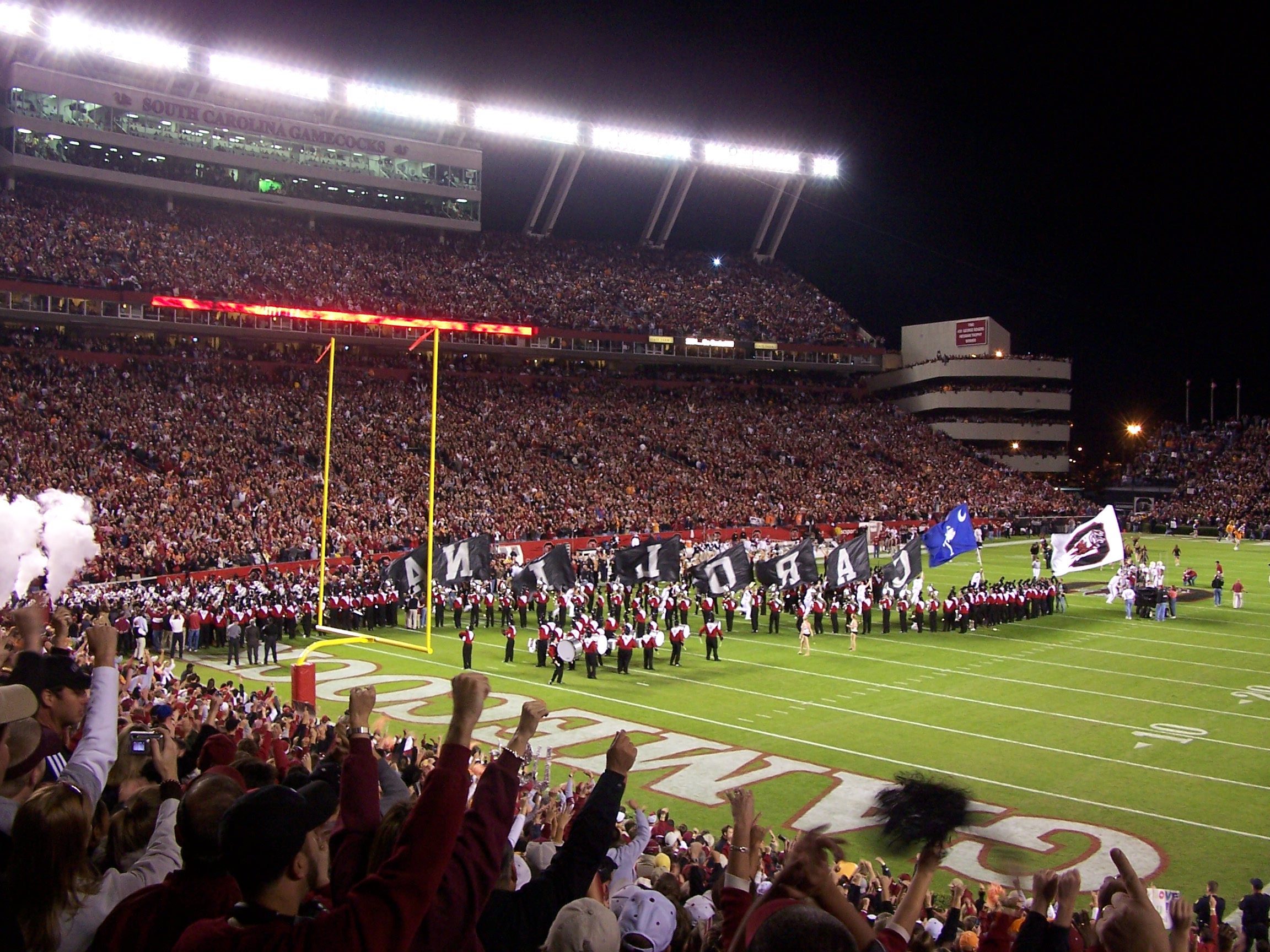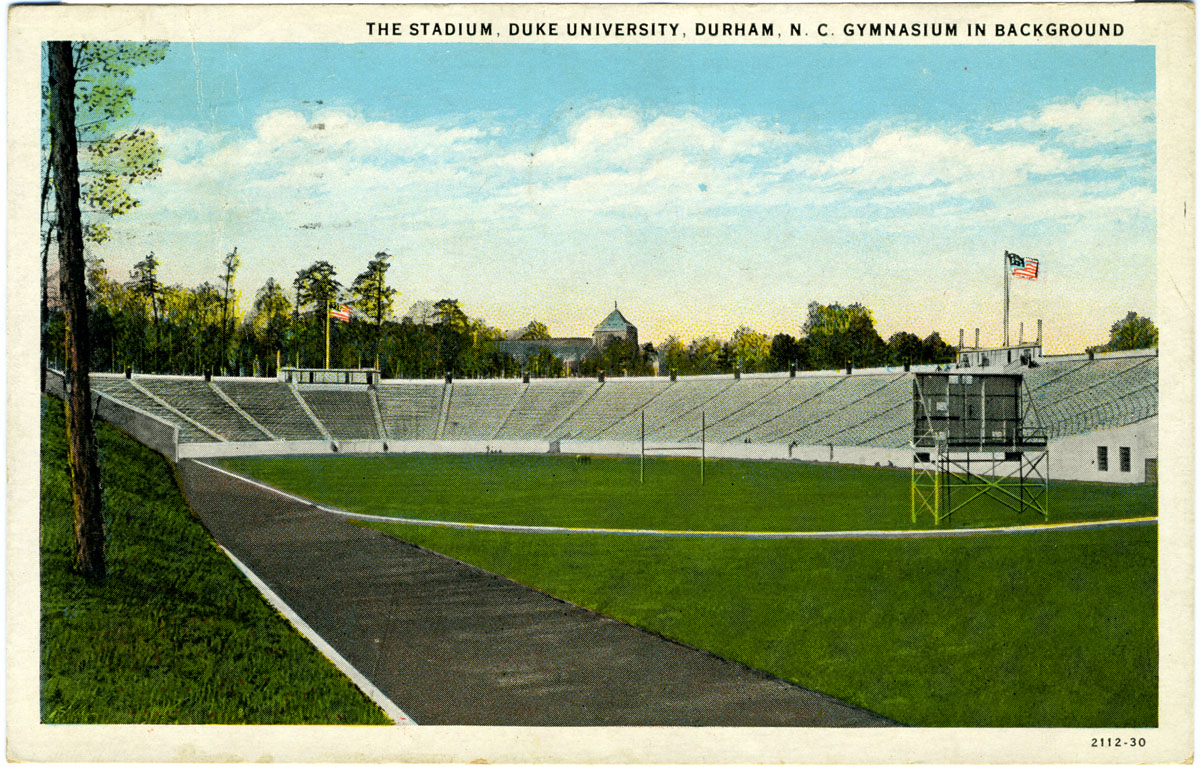|
1950 Wake Forest Demon Deacons Football Team ...
The 1950 Wake Forest Demon Deacons football team was an American football team that represented Wake Forest University during the 1950 college football season. In its 14th and final season under head coach Peahead Walker, the team compiled a 6–1–2 record and finished in fourth place in the Southern Conference. Schedule Team leaders References {{Wake Forest Demon Deacons football navbox Wake Forest Wake Forest Demon Deacons football seasons Wake Forest Demon Deacons football The Wake Forest Demon Deacons football team represents Wake Forest University in the sport of American football. The Demon Deacons compete in the Football Bowl Subdivision (FBS) of the National Collegiate Athletic Association (NCAA) and the Atl ... [...More Info...] [...Related Items...] OR: [Wikipedia] [Google] [Baidu] |
Southern Conference
The Southern Conference (SoCon) is a collegiate athletic conference affiliated with the National Collegiate Athletic Association (NCAA) Division I. Southern Conference football teams compete in the Football Championship Subdivision (formerly known as Division I-AA). Member institutions are located in the states of Alabama, Georgia, North Carolina, South Carolina, Tennessee, and Virginia. Established in 1921, the Southern Conference ranks as the fifth-oldest major college athletic conference in the United States, and either the third- or fourth-oldest in continuous operation, depending on definitions. Among conferences currently in operation, the Big Ten (1896) and Missouri Valley (1907) are indisputably older. The Pac-12 Conference did not operate under its current charter until 1959, but claims the history of the Pacific Coast Conference, founded in 1915, as its own. The Southwest Conference (SWC) was founded in 1914, but ceased operation in 1996. The Big Eight Conference cl ... [...More Info...] [...Related Items...] OR: [Wikipedia] [Google] [Baidu] |
Chapel Hill, North Carolina
Chapel Hill is a town in Orange, Durham and Chatham counties in the U.S. state of North Carolina. Its population was 61,960 in the 2020 census, making Chapel Hill the 17th-largest municipality in the state. Chapel Hill, Durham, and the state capital, Raleigh, make up the corners of the Research Triangle (officially the Raleigh–Durham–Cary combined statistical area), with a total population of 1,998,808. The town was founded in 1793 and is centered on Franklin Street, covering . It contains several districts and buildings listed on the National Register of Historic Places. The University of North Carolina at Chapel Hill and UNC Health Care are a major part of the economy and town influence. Local artists have created many murals. History The area was the home place of early settler William Barbee of Middlesex County, Virginia, whose 1753 grant of 585 acres from John Carteret, 2nd Earl Granville was the first of two land grants in what is now the Chapel Hill-Durham are ... [...More Info...] [...Related Items...] OR: [Wikipedia] [Google] [Baidu] |
Williams–Brice Stadium
Williams–Brice Stadium is the home football stadium for the South Carolina Gamecocks, the college football team representing the University of South Carolina in Columbia, South Carolina. It is currently the 16th largest on-campus college football stadium in the NCAA and is located on the corner of George Rogers Boulevard and Bluff Road adjacent to the South Carolina State Fairgrounds. Carolina football teams consistently attract standing-room-only crowds to Williams–Brice Stadium. The atmosphere on game days has been voted "the best" by SECsports.com, and has been noted as being among the loudest environments to play in by opposing players. The stadium has been the site of many concerts, state high school football championships, and various other events. It hosted the annual Palmetto Capital City Classic between Benedict College and South Carolina State University until the last game in 2005. The stadium is sometimes called "The Cockpit" by Gamecock fans and local media, and ... [...More Info...] [...Related Items...] OR: [Wikipedia] [Google] [Baidu] |
1950 South Carolina Gamecocks Football Team
{{Collegefootball-1950s-season-stub ...
The 1950 South Carolina Gamecocks football team was an American football team that represented the University of South Carolina as a member of the Southern Conference (SoCon) during the 1950 college football season. In their tenth season under head coach Rex Enright, the Gamecocks compiled an overall record of 3–4–2 with a mark of 2–4–1 in conference play, placing 12th in the SoCon. Schedule References South Carolina South Carolina Gamecocks football seasons South Carolina Gamecocks football The South Carolina Gamecocks football program represents the University of South Carolina. The Gamecocks compete in the Football Bowl Subdivision of the National Collegiate Athletic Association (NCAA) and the Eastern Division of the Southeastern ... [...More Info...] [...Related Items...] OR: [Wikipedia] [Google] [Baidu] |
NC State–Wake Forest Rivalry
The NC State–Wake Forest rivalry is a series of athletic contests between in-state rivals, the North Carolina State University Wolfpack and the Wake Forest University Demon Deacons. The first game was played in 1895 between the two institutions. Wake Forest was originally located in Wake Forest, North Carolina (approximately 18 miles NNE of NCSU's campus in Raleigh) until it moved its campus across the state of North Carolina to Winston-Salem, North Carolina in 1956. The two universities are members of the Atlantic Coast Conference, where they meet every year in football due to being aligned in the Atlantic Division. The schools play each other twice in basketball every season, due to being primary partners. Football The NC State–Wake Forest football rivalry is an American college football rivalry between the NC State Wolfpack football team of North Carolina State University and the Wake Forest Demon Deacons football team of Wake Forest University. Playing consecutivel ... [...More Info...] [...Related Items...] OR: [Wikipedia] [Google] [Baidu] |
1950 NC State Wolfpack Football Team ...
The 1950 NC State Wolfpack football team represented North Carolina State University during the 1950 college football season. The Wolfpack were led by seventh-year head coach Beattie Feathers and played their home games at Riddick Stadium in Raleigh, North Carolina. They competed as members of the Southern Conference. Schedule References {{NC State Wolfpack football navbox NC State NC State Wolfpack football seasons NC State Wolfpack football The NC State Wolfpack football team represents North Carolina State University in the sport of American football. The Wolfpack competes in the NCAA Division I Football Bowl Subdivision (FBS) of the National Collegiate Athletic Association (NCAA) ... [...More Info...] [...Related Items...] OR: [Wikipedia] [Google] [Baidu] |
Tobacco Road (rivalry)
Tobacco Road is a term used in college sports, mainly basketball, for the four rival universities of North Carolina that play in the Atlantic Coast Conference (ACC). The term refers to the area's history as a major tobacco producer. The Tobacco Road teams represent the following universities: * North Carolina Tar Heels (University of North Carolina at Chapel Hill in Chapel Hill) * Duke Blue Devils (Duke University in Durham) * NC State Wolfpack (North Carolina State University in Raleigh) * Wake Forest Demon Deacons (Wake Forest University in Winston-Salem) North Carolina, Duke, and NC State lie in the Research Triangle and are separated by no more than 25 miles (40 km). Before moving to Winston-Salem in 1956, Wake Forest University was located in the town of Wake Forest within the Triangle region, to the northeast of Raleigh. The schools are historical and present powerhouses among college sports, especially basketball. The universities' proximity and membership in the ACC, c ... [...More Info...] [...Related Items...] OR: [Wikipedia] [Google] [Baidu] |
Durham, North Carolina
Durham ( ) is a city in the U.S. state of North Carolina and the county seat of Durham County. Small portions of the city limits extend into Orange County and Wake County. With a population of 283,506 in the 2020 Census, Durham is the 4th-most populous city in North Carolina, and the 74th-most populous city in the United States. The city is located in the east-central part of the Piedmont region along the Eno River. Durham is the core of the four-county Durham-Chapel Hill Metropolitan Area, which has a population of 649,903 as of 2020 U.S. Census. The Office of Management and Budget also includes Durham as a part of the Raleigh-Durham-Cary Combined Statistical Area, commonly known as the Research Triangle, which has a population of 2,043,867 as of 2020 U.S. census. A railway depot was established in 1849 on land donated by Bartlett S. Durham, the namesake of the city. Following the American Civil War, the community of Durham Station expanded rapidly, in part due to the ... [...More Info...] [...Related Items...] OR: [Wikipedia] [Google] [Baidu] |
Wallace Wade Stadium
Wallace Wade Stadium, in full Brooks Field at Wallace Wade Stadium, is a 40,004-seat outdoor stadium in the southeastern United States, located on the campus of Duke University in Durham, North Carolina. Primarily used for American football, it is the home field of the Duke Blue Devils of the Atlantic Coast Conference. Opened in 1929, it was the first facility in Duke's new West Campus. Originally Duke Stadium, it was renamed in 1967 for former head coach Wallace Wade. The playing surface was renamed Brooks Field at the beginning of the 2015 season after the removal of the track and lowering of the field-level seats. History Wallace Wade Stadium opened in 1929 as "Duke Stadium", largely funded with bonds—the school advertised for "1,000 individuals to invest $100 in Duke's athletic future" and offered 6% interest. The stadium is notable for being the site of the 1942 Rose Bowl on New Year's Day. Duke had won the invitation to the game as the eastern representati ... [...More Info...] [...Related Items...] OR: [Wikipedia] [Google] [Baidu] |
1950 Duke Blue Devils Football Team
{{Collegefootball-1950s-season-stub ...
The 1950 Duke Blue Devils football team represented the Duke Blue Devils of Duke University during the 1950 college football season. Schedule References Duke Duke Blue Devils football seasons Duke Blue Devils football The Duke Blue Devils football team represents Duke University in the sport of American football. The Blue Devils compete in the Football Bowl Subdivision (FBS) of the National Collegiate Athletic Association (NCAA) and the Coastal Division of t ... [...More Info...] [...Related Items...] OR: [Wikipedia] [Google] [Baidu] |
Winston-Salem, North Carolina
Winston-Salem is a city and the county seat of Forsyth County, North Carolina, United States. In the 2020 census, the population was 249,545, making it the second-largest municipality in the Piedmont Triad region, the 5th most populous city in North Carolina, the third-largest urban area in North Carolina, and the 90th most populous city in the United States. With a metropolitan population of 679,948 it is the fourth largest metropolitan area in North Carolina. Winston-Salem is home to the tallest office building in the region, 100 North Main Street, formerly known as the Wachovia Building and now known locally as the Wells Fargo Center. In 2003, the Greensboro-Winston-Salem-High Point metropolitan statistical area was redefined by the OMB and separated into the two major metropolitan areas of Winston-Salem and Greensboro-High Point. The population of the Winston-Salem metropolitan area in 2020 was 679,948. The metro area covers over 2,000 square miles and spans the five co ... [...More Info...] [...Related Items...] OR: [Wikipedia] [Google] [Baidu] |
Bowman Gray Stadium
Bowman Gray Stadium is a NASCAR sanctioned asphalt flat oval short track and longstanding football stadium located in Winston-Salem, North Carolina. It is one of stock car racing's most legendary venues, and is referred to as "NASCAR's longest-running weekly race track". Bowman Gray Stadium is part of the Winston-Salem Sports and Entertainment Complex and is home of the Winston-Salem State University Rams football team. It was also the home of the Wake Forest University football team from 1956 until Groves Stadium (now Truist Field at Wake Forest) opened in 1968. Bowman Gray Stadium was a popular venue for high school football in the 1970s and 1980s. Parkland and R.J. Reynolds High Schools shared Bowman Gray Stadium as their home field for high school football until the two schools built their own facility (Deaton-Thompson Stadium) in 1994. History The stadium was built in 1937 as a public works project to provide jobs during the Great Depression. The first event at the ne ... [...More Info...] [...Related Items...] OR: [Wikipedia] [Google] [Baidu] |




